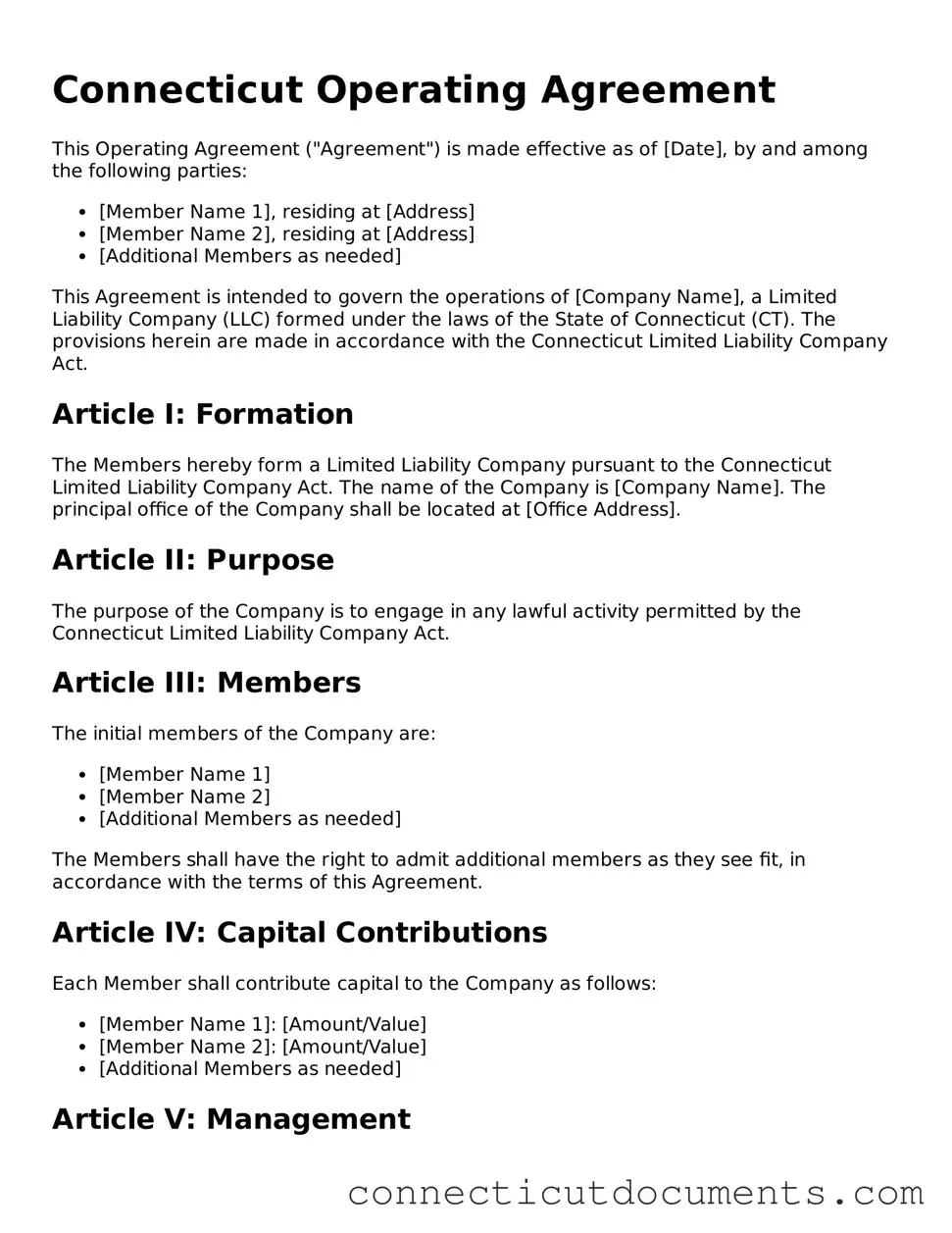What is a Connecticut Operating Agreement?
A Connecticut Operating Agreement is a legal document that outlines the ownership and operating procedures of a Limited Liability Company (LLC) in Connecticut. It serves as an internal document that details how the LLC will be managed, the rights and responsibilities of its members, and the procedures for making decisions within the company.
Why do I need an Operating Agreement for my LLC?
Having an Operating Agreement is crucial for several reasons. It helps establish clear guidelines for the management of the LLC, which can prevent misunderstandings among members. Additionally, it can protect your personal assets by reinforcing the limited liability status of the LLC. While Connecticut does not legally require an Operating Agreement, it is highly recommended.
What should be included in a Connecticut Operating Agreement?
Your Operating Agreement should include key information such as the LLC's name, address, and purpose. It should outline the ownership structure, including each member's percentage of ownership. Additionally, detail the management structure, voting rights, and procedures for adding or removing members. Including provisions for profit distribution and handling disputes is also advisable.
Can I create an Operating Agreement on my own?
Yes, you can draft your own Operating Agreement. There are many templates available online that can help guide you. However, it’s wise to consult with a legal professional to ensure that your document complies with state laws and adequately protects your interests.
How do I amend my Operating Agreement?
Amending your Operating Agreement is usually a straightforward process. Most agreements will include a section that outlines how amendments can be made. Typically, this requires a vote among the members. Make sure to document any changes in writing and keep them with your original Operating Agreement.
Is the Operating Agreement filed with the state?
No, the Operating Agreement is not filed with the state of Connecticut. It is an internal document that should be kept with your business records. However, it is important to have it readily available in case of any legal disputes or for reference in business operations.
What happens if I don’t have an Operating Agreement?
Without an Operating Agreement, your LLC will be governed by Connecticut's default laws. This can lead to unintended consequences, such as disputes over management and profit distribution. It may also expose you to greater liability risks, as the Operating Agreement helps reinforce the separation between personal and business assets.
How often should I review my Operating Agreement?
It's a good practice to review your Operating Agreement at least annually or whenever there are significant changes in your business, such as adding new members or changing the management structure. Regular reviews ensure that the document remains relevant and reflects the current state of your LLC.
